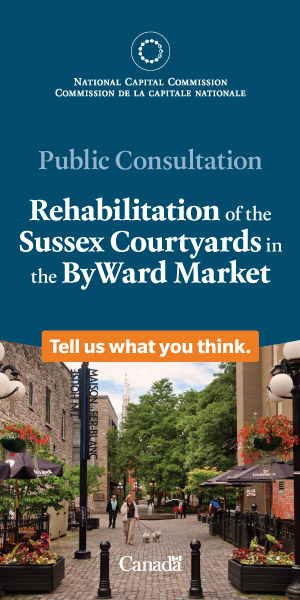by Dr. John Bacher and Danny Beaton, Turtle Clan Mohawk [www.dannybeaton.ca]
On June 17th, 2015 Dr. Reed Noss, Professor of Conservation Biology at the University of Florida, the author of seven books and 304 articles, gave an impassioned talk in the Debates Room of the University of Toronto’s Hart House. Noss spoke on the need to rescue and connect natural habitats before they are chopped up by urban sprawl. Isolated habitat islands are becoming “biological sinks”: leading to species extirpation and extinction.
Noss was introduced by Shelly Petrie, Program Director of the Greenbelt Foundation. She stressed his rescue of the Oak Ridges Moraine and the Niagara Escarpment from development cuts.
Noss exploded debate through maps. These indicate areas that should be “re-wilded”, (meaning restored to natural habitat). During the late 1980s his dissertation supervisor, told him, “Don’t publish these maps.” Noss gleefully recalled how, “I did publish the maps, and they soon dominated the front pages of Florida’s newspapers. “
Noss finds that, “There are a minority of around twenty-five per cent of the population who disagree with the natural areas networks the maps propose. They attempt to use the maps to organize opposition to conservation. They do not however, succeed in changing public opinion. Most people are inspired by maps that show more wild lands”.
Noss recalled how, “For twenty-five years Florida funded land acquisition based on the corridor concept at a guaranteed level of $350 million annually. This continued until the last six years. It only ended because of the domination of state politics in Florida by the factional group known as the Tea Party. The majority of the population however, do not support the Tea Party’s antics. This was shown by a successful referendum for an amendment to the Florida state constitution to restore funding for the acquisition of natural areas. “
Although retarded by the Tea Party, Noss’ efforts during the quarter-century that they were funded in Florida have had a major impact on rescuing critical threatened species, notably the Cougar and the Black Bear. Before the program began to have an impact in the 1990s the Florida Panther, ( a popular name for the American Cougar in Florida), was on the verge of extirpation. Since they were trapped in a few protected areas such as Everglades National Park, the Cougars were suffering from genetic uniformity, causing a high rate of mortality from heart disease.
In response to the Cougars’ plight Noss soon showed the importance of the new scientific discipline he leads so ably, Conservation Biology. Cougars from Texas were brought in to increase genetic diversity in the population. This was combined over the a quarter century with an aggressive program of purchase of habitat including linkages that allow the Cougars to expand their range northwards. Noss told the wowed audience, “We are seeing increasingly the success of the network of corridors stretching northwards from the Everglades. Cougars are expanding .their range to where they were displaced in the past. We are increasingly seeing Cougars from the Everglades roaming north to Georgia.”
While Noss told the Hart House assembly that the Ontario Greenbelt’s connected corridors of natural habitats resembles the system built up in Florida over the past thirty years, the province has not adopted Florida’s efforts to build wildlife crossings to reduce road mortality. Some of the most significant photographs he displayed were of underpasses in Florida to encourage Cougars and Black Bears to move safely under highways. These he stressed have been monitored and are being used successfully. Another contrast to Ontario came out in his description of the community where he lives, which is organized to help wildlife move through it. Unlike Newmarket where bears are shot, it is honoured to have a few passing through annually.
Noss is pessimistic about improving wildlife habitat west of the Niagara Escarpment. “I have been to Rondeau and Pelee parks, but I don’t see great opportunities for linking and expanding habitats there.” While in the rest of southern Ontario he uses larger species such as Moose and Deer to expand ranges through corridors and bigger habitat tracts, here he see micro scale strategies for limited ranges species such as Blanding’s Turtle.
Noss’ pessimism about the corn belt illustrates the limitations of efforts to improve the environment which do not attempt to mobilize native communities and their treaty rights. This situation is most evident in the part of Ontario with the least natural habitat, Chatham-Kent. (former Kent County) It has only 4.5 per cent of its landscape in forest cover. This is rapidly shrinking as corn prices soar and trees are razed.
Much of the tiny area remaining in forest cover in Chatham-Kent is found on the predominately forested 13 square kilometre reserve of the Moravian of the Thames First Nation. The community’s leader, Chief Greg Peters has termed the situation an affront to their “aboriginal right to hunt and fish”, since wildlife cannot survive where there are no forests. He has also attributed deforestation to the siltation of the Thames River, which kills fish.
It is to be hoped that Noss’ ideas will be strengthened by work with native communities, using treaty rights to restore a degraded landscape. In such a situation moose might again swim in the Thames River. It flows through a landscape which ecologist Thomas Beaton, has found contributes to “the highest rates of hospitalization due to cardiovascular disease, stroke and chronic obstructive pulmonary disease” in Ontario.
Danny Beaton says, “When we destroy Mother Earth we destroy ourselves. We humans have the Sacred Duty to be a voice for all life Species, so that means we are the voice for the Cougar, we are the voice for the Bear, the Turtle, moose, deer and everything that moves on this Sacred Mother Earth. We are the voice for plant life, the rivers, lakes and great oceans.”













